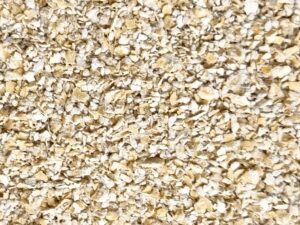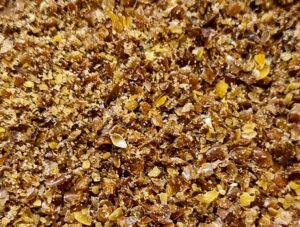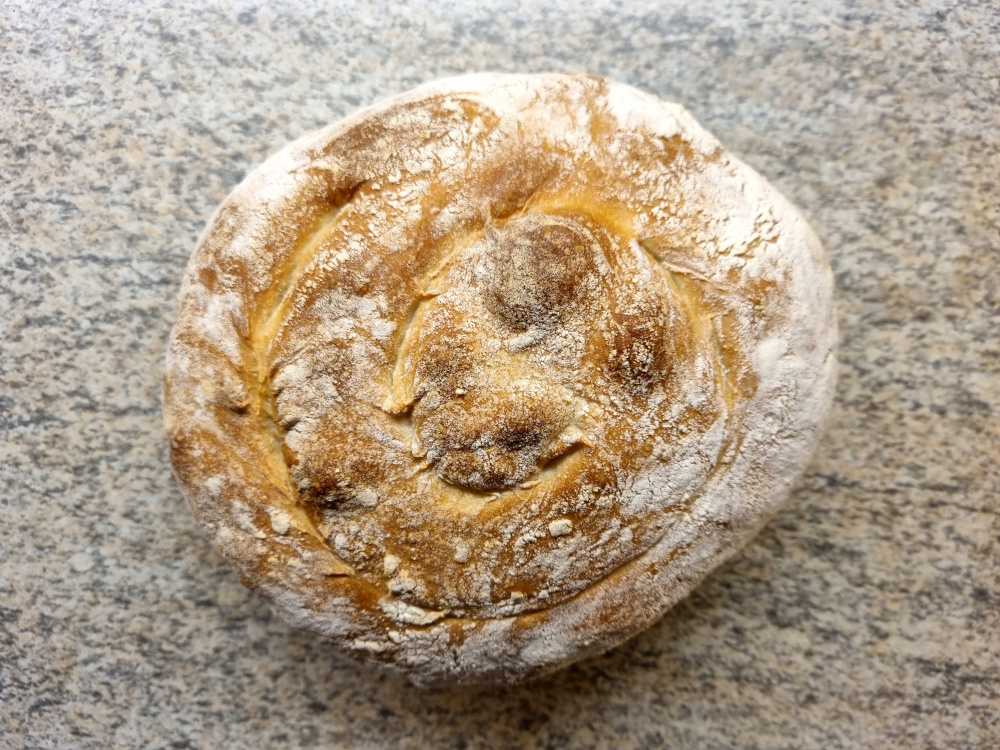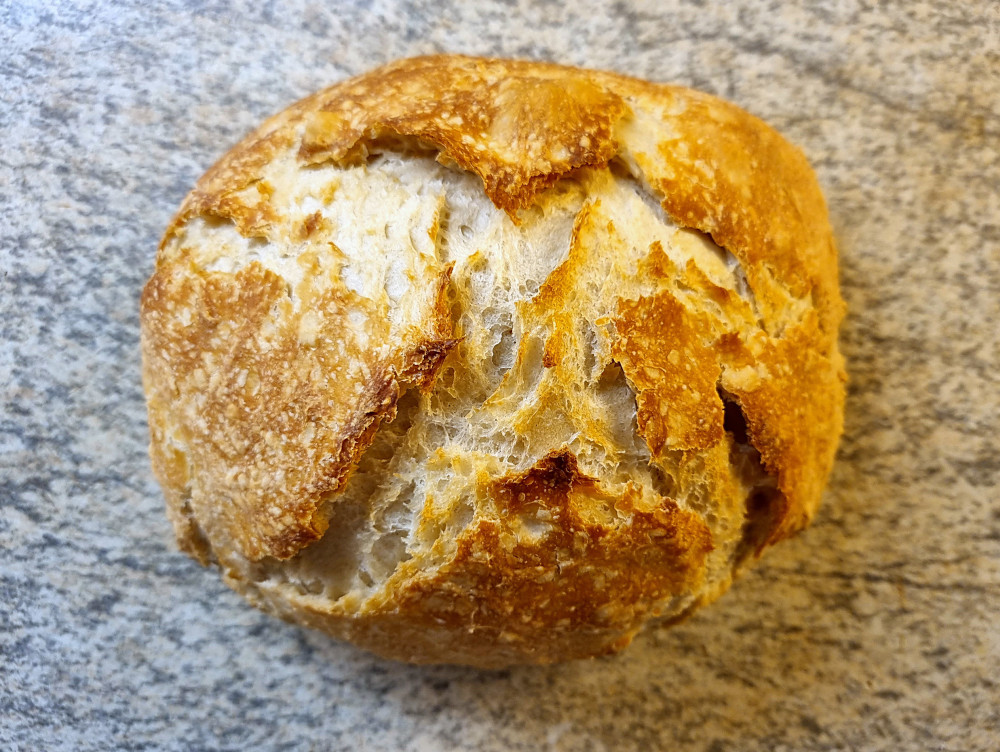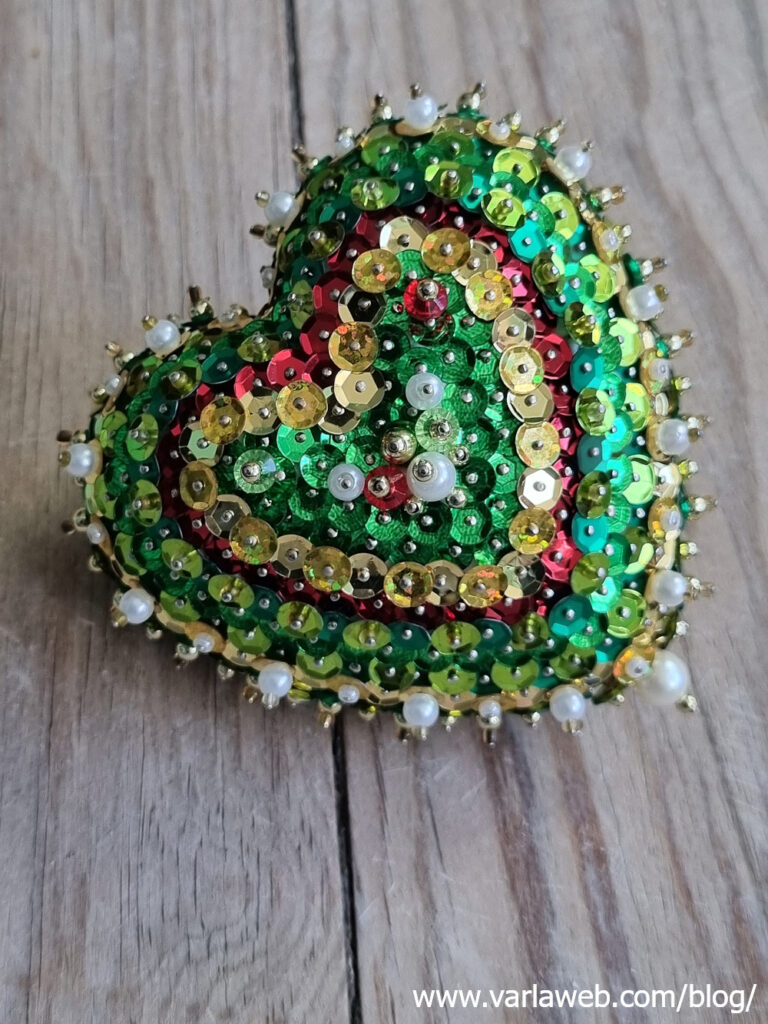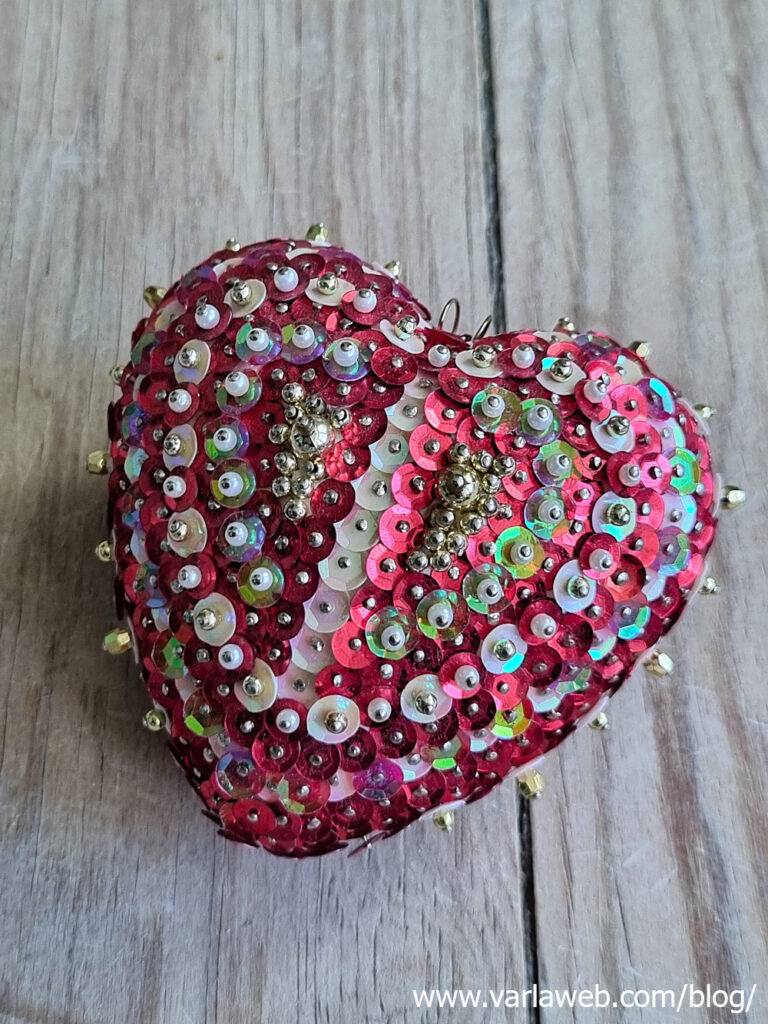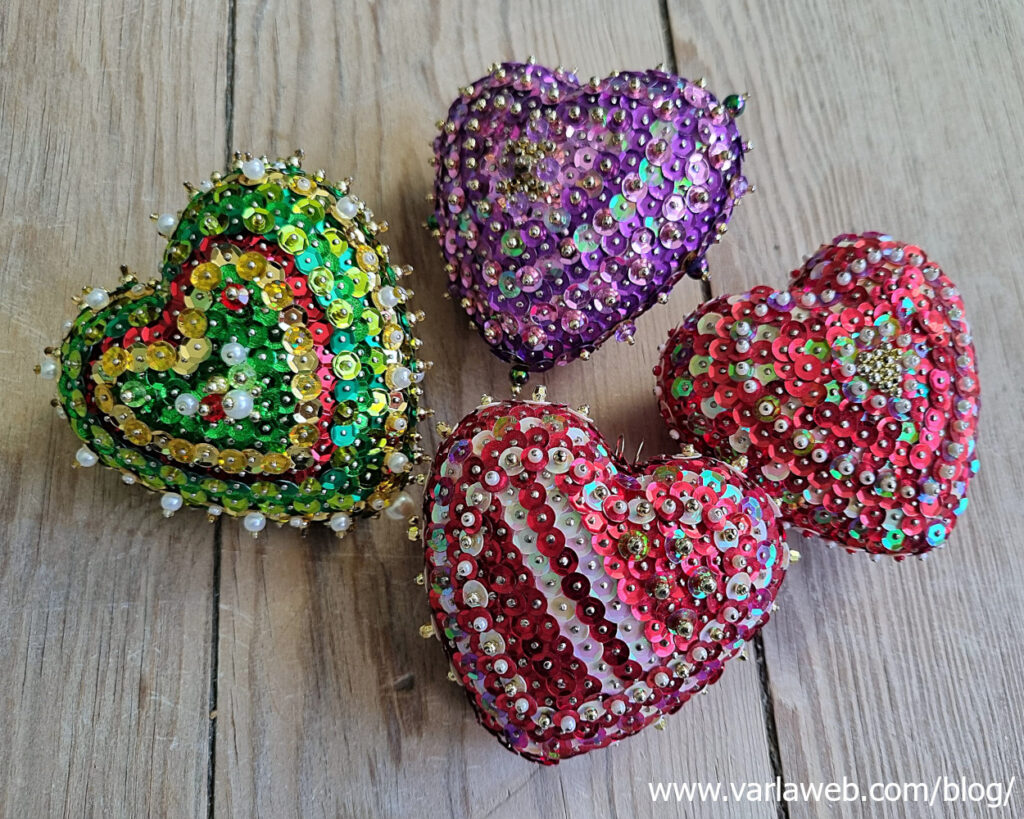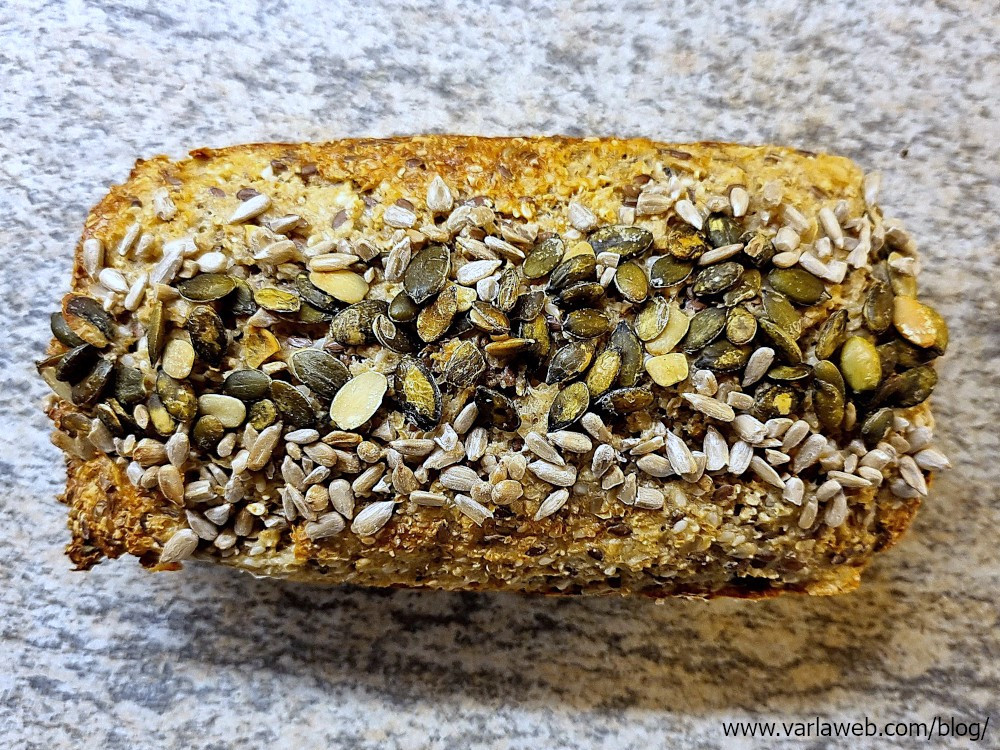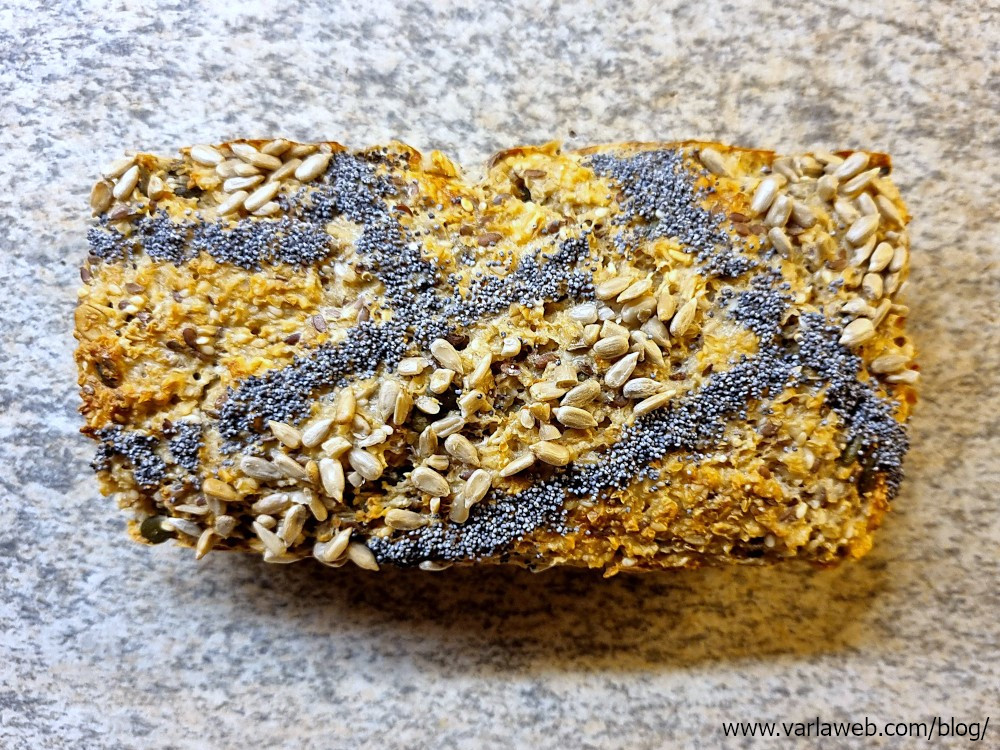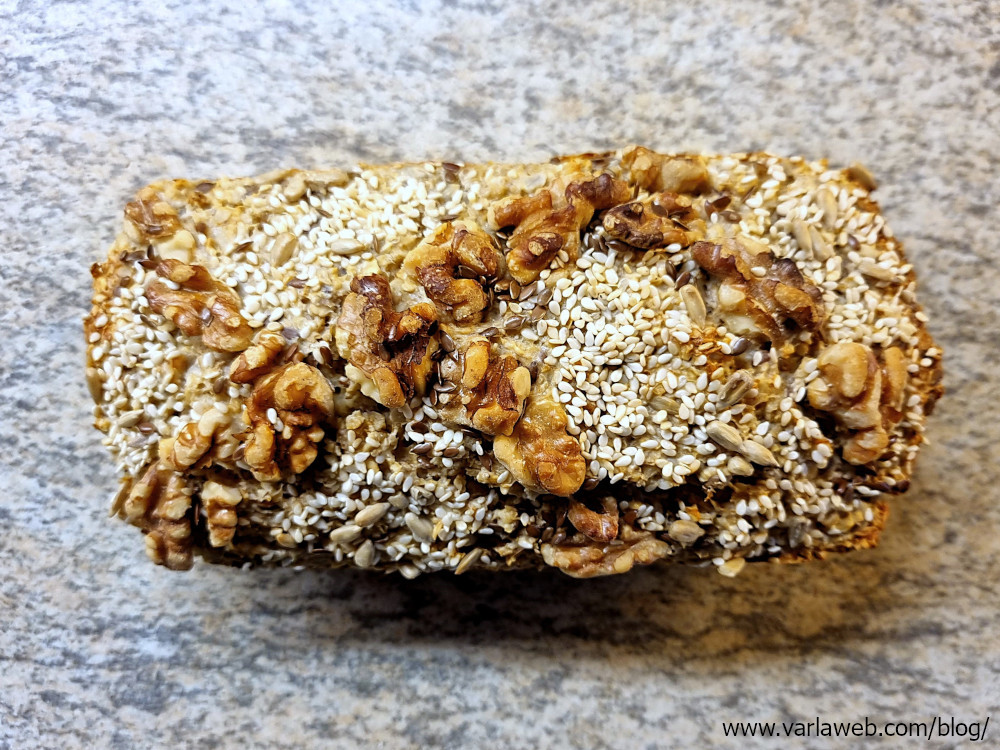This is the Danish translation of the recipe. The English version is here.
Forberedelse: 10 + 5 min. Hævetid: 30 min. Bagetid: 45-50 min. Portioner: 18.
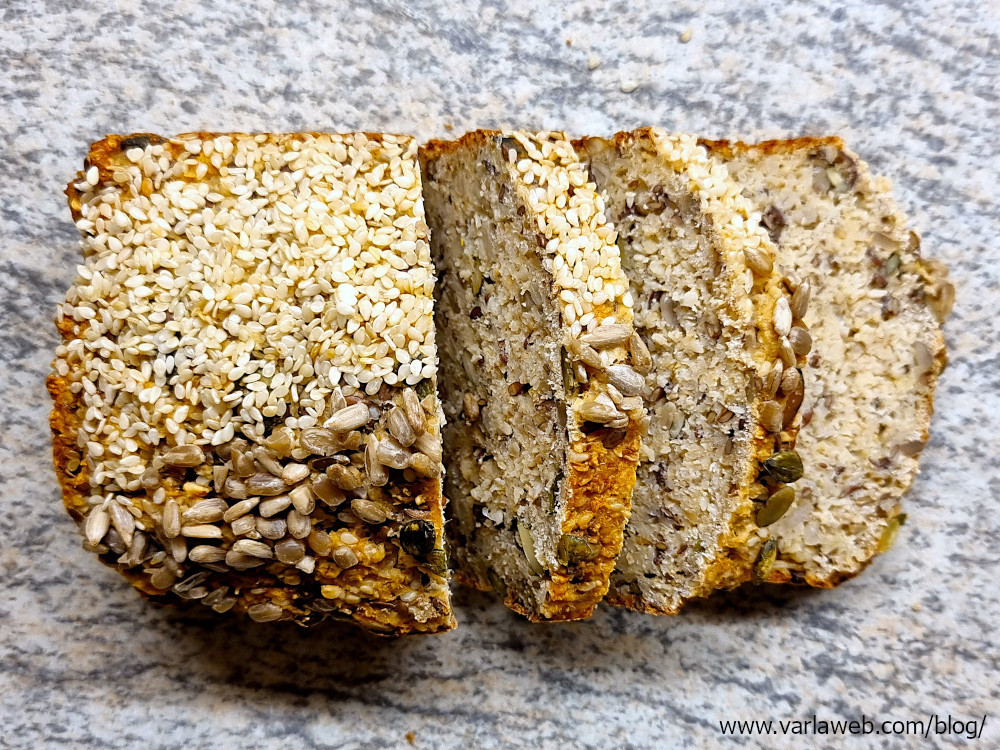
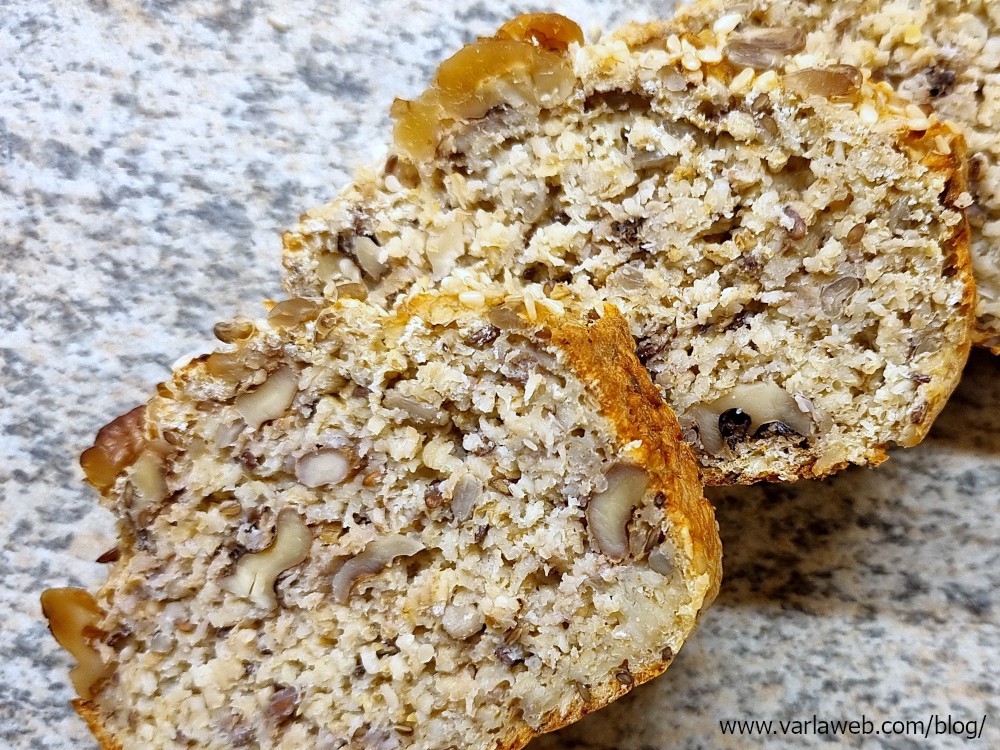
Konsistensen af dette brød minder om hjemmebagt rugbrød, men det smager som fiberbrød. Det har en tynd, hård skorpe, kan skæres forholdsvis tyndt og mætter godt. Det kan laves fuldstændigt glutenfri og er fuld af fiber, D-vitamin, jern, og protein. En skive indeholder omtrent 70 kalorier. Hvis det opbevares forsvarligt, kan det holde i mindst fire dage. Det smager godt med Brie eller andre slags stærke eller pikante pålæg, såsom rejesalat eller paté, eller sammen med en salat.
Jeg har inkluderet både en kort version af opskriften, og en detaljeret, med billeder.
Redskaber
Du får brug for to skåle, en stor, blød spatel eller flad ske, et piskeris, og en bageform, med lav kant, som er 10 cm bred og mindst 18 cm lang. Du får også brug for et stykke kvalitets bagepapir, en blender, og måleredskaber.
Ingredienser
- 1 Æg
- 1 Æggehvide
- 25 ml Citronsaft (omtrent en halv citron)
- 1 dl Lavfedt yoghurt (kan være plantebaseret)
- 1 dl Lavfedt græsk yoghurt (græsk “inspireret” er ok, men den skal være tyk)
- 75 gr Havregryn
- 75 gr Havregryn, fint hakkede
- 1 tbsp Hørfrø, fint malede
- 1 tsp Bagepulver
- ½ tsp Natron
- ½–1 tsp Salt
- Frøblanding eller valnøddeblanding (se forneden)
- Valgfrit Extra havregryn, frø eller nødder til at pynte overfladen
Valnøddeblanding
- 30 gr Valnødder, let hakkede
- 20 gr Solsikkekerner
- 20 gr Sesamfrø
- 2 tbsp Hørfrø
Frøblanding
- 30 gr Hørfrø
- 20 gr Solsikkekerner
- 20 gr Sesamfrø
- 2-4 tbsp Græskarkerner
Hørfrø er ret salte. Jeg anbefaler kun en halv teske salt sammen med denne blanding.
Ingredienser, bemærkninger
Hørfrø og havregryn kan hakkes i en blender. En lille maskine er nok. Har du en power-blender, så brug pulse funktionen på havregrynene, da de ellers hurtigt kan blive til mel, og det er ikke, hvad vi går efter.
Konsistensen af de hakkede havregryn og de malede hørfrø skal se nogenlunde sådan her ud:
Opskrift, kort
- Kom alle de tørre ingredienser i en skål. Bland godt.
- I en anden skål, tilsæt alle de våde ingredienser, en ad gangen, og pisk efter du har tilsat hver ingrediens.
- Gradvist tilsæt den tørre blanding til den våde blanding, og vend dem nænsomt sammen til en dej.
- Lad hvile i en halv time under et klæde et halvkøligt sted. Varm ovnen ved 180 C (luft), 200 C, eller 6 (gas).
- Anret bagepapiret i din bageform. Fordel dejen forsigtigt uden at trykke for meget. Hvis din bageform er længere end 20 cm, form brødet så det har den rette længde. Stænk overfladen med lidt vand og glat den ud med en spatel. Pynt med gryn, frø eller nødder.
- Du har to muligheder, når du bager brødet:
- For et fast brød, der nemt kan skæres i skiver, bag i 45-50 min. Placer en skål med vand i ovnen i de første 20-30 min, eller indtil brødet er blevet fast, fjern derpå skålen.
- Spring skålen over og bag i 45-55 min, for en mindre fast version af brødet.
- Tag brødet ud af formen med det samme efter bagning. Hvis skorpen bliver revet af, når du piller bagepapir væk, skal brødet have 5 min mere i ovnen.
- Lad brødet køle af på en rist. Når det er helt afkølet, opbevar det under et klæde eller i en brødkasse.
Opskrift, udførlig
- Kom frø eller valnøddeblanding, malede hørfrø, bagepulver, natron, salt, og al havregryn i en skål. Bland godt, så bagepulver og natron er godt fordelt.
- I en anden skål, tilsæt æg, æggehvide, citronsaft, og yoghurt, en ad gangen, og pisk efter du har tilsat hver ingrediens.
- Gradvist tilsæt den tørre blanding til den våde blanding, og vend dem nænsomt til en dej. Bare nok til at dejen er ensartet. Dejen bør ligne og føles som meget tyk havregrød.
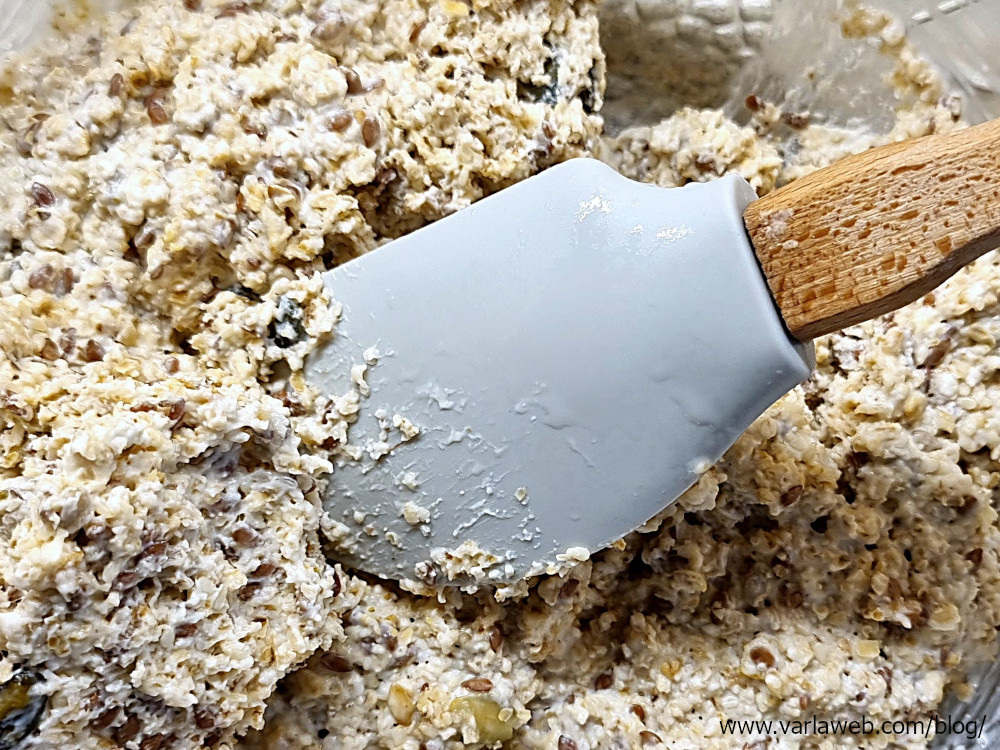
- Lad dejen hvile i en halv time under et klæde et halvkøligt sted. Varm ovnen ved 180 C (luft), 200 C, eller 6 (gas). Efter hævning bør dejen have fået mere volume og en mere luftig, fast konsistens, som kan formes.
Hvis din dej ikke hæver, så lad den stå lidt længere eller/og et koldere sted, dog helst ikke køleskabet. Luftfugtighed og -temperatur har betydning. Om sommeren skal jeg tit give min dej lidt mere hvile end ellers. Valnøddeversionen kan iøvrigt godt lide længere hævning.
- Anret bagepapiret i din bageform. Fordel dejen forsigtigt uden at presse for meget. Prøv at få dejen ind i hjørnerne af formen, så bliver brødet pænest. Hvis din bageform er længere end 20 cm, form brødet så det har den rette længde; dejen løber ikke under bagningen. Stænk overfladen med lidt vand og glat den ud med en spatel. Du kan forme overfladen i en let bue, så den får en pæn form, og pynte med gryn, frø eller nødder.
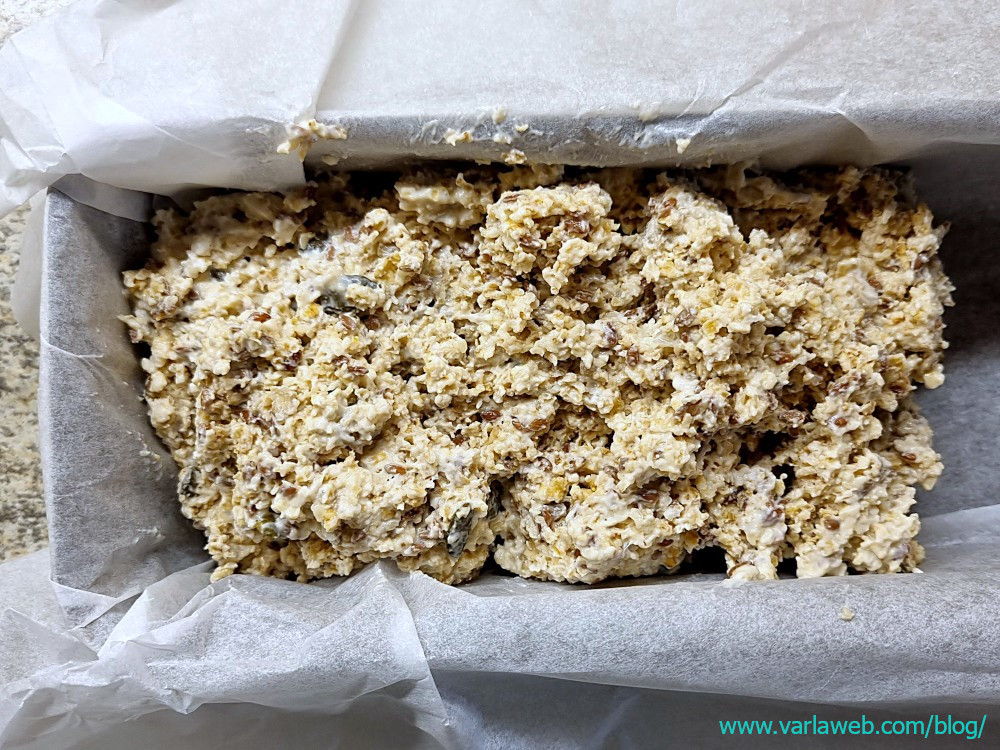
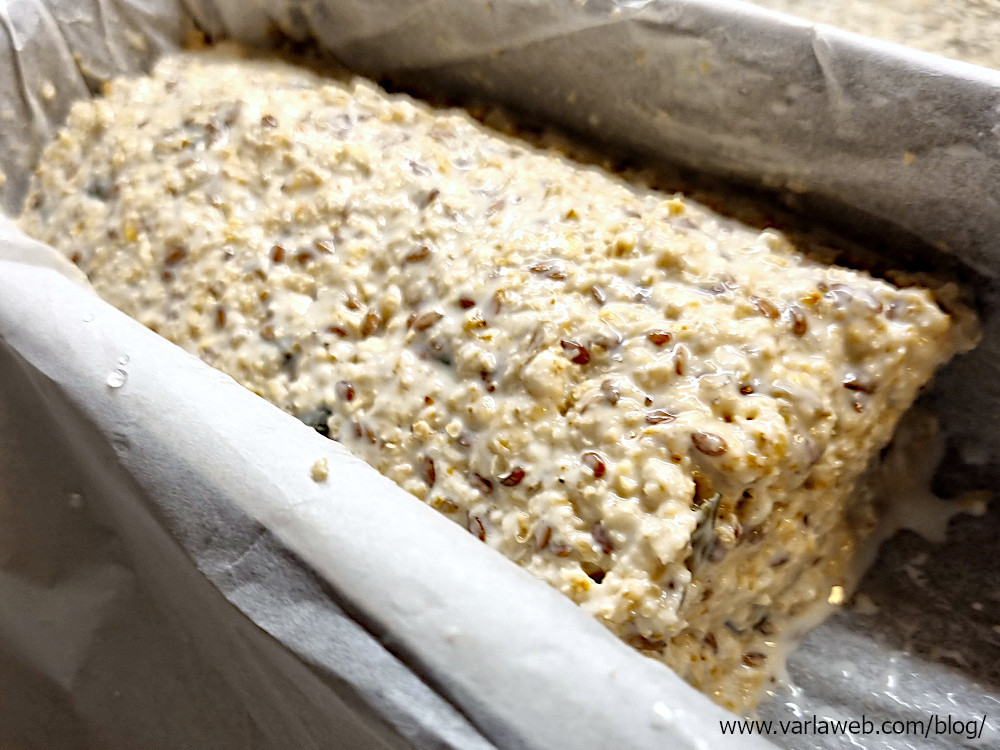
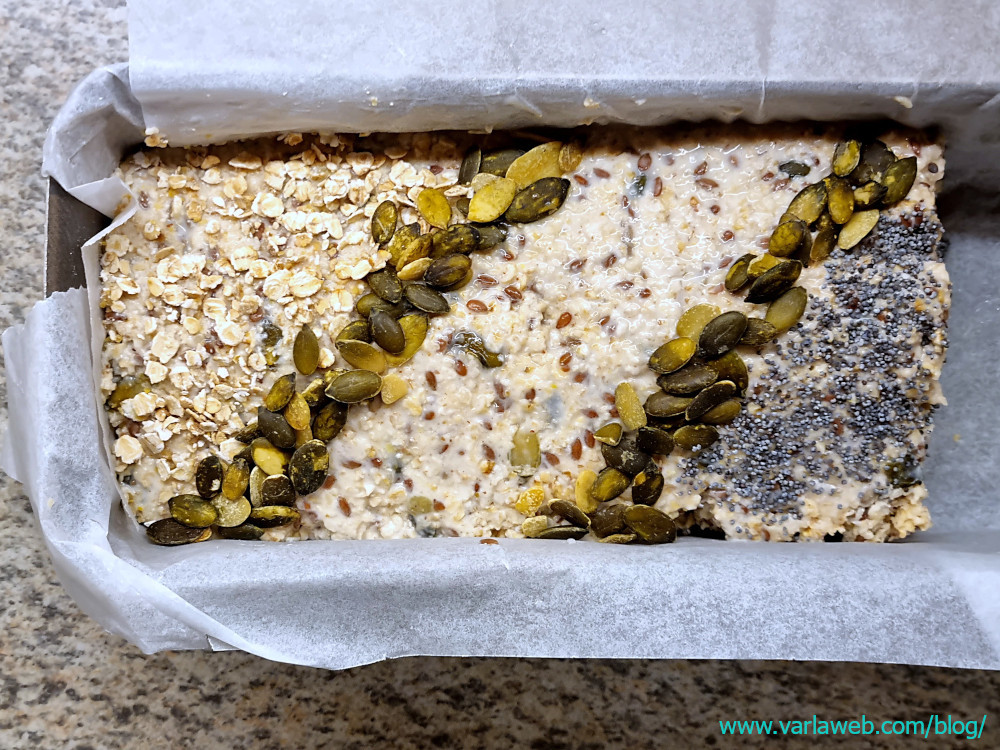
Hvis din dej ser meget tør ud efter hvile, brug bare et par skefulde mere vand, når du former. Er brødet lavet med en plantebaseret yoghurt, vil dejen ofte være mere tør i det.
- Du har to muligheder, når du bager:
- For et fast brød, der nemt kan skæres i skiver, bag i 45-50 min. Placer en ovnfast skål med vand i ovnen i de første 20-30 min, eller indtil brødet er blevet fast, fjern derpå skålen. Valnøddeversionen vil gerne have mere damp end frøversionen.
- Spring skålen over og bag i 45-55 min, for en mindre fast version.
- Tag brødet ud af formen med det samme efter bagning. Brødet skal være fast, men skal give lidt efter når du trykker på overfladen. Skorpen skal være tynd, hård, med en rødlig glød. Hvis skorpen bliver revet af, når du piller bagepapir væk, skal brødet have 5 min mere i ovnen. Ellers lad brødet køle af på en rist.
- Når det er helt afkølet, opbevar brødet under et klæde eller i en brødkasse, gerne et halvkøligt sted. Du kan gemme det i en lufttæt beholder, men så bliver skorpen ofte blød. Det kan også kommes i køleskabet, men så risikerer man, at det kommer til at smage surt.
Hvis dit brød virker underbagt, husk dette er et saftigt brød. Hvis du skærer i det, mens det stadig er varmt, ja, så er det noget klæbrigt stads. Lad brødet køle. Succes måles ved, når det er afkølet, kan du nemt skære det i skiver, og bryder brødet som brød skal?
Få idéer til hvordan du kan pynte dit brød her.
God fornøjelse 🙂

